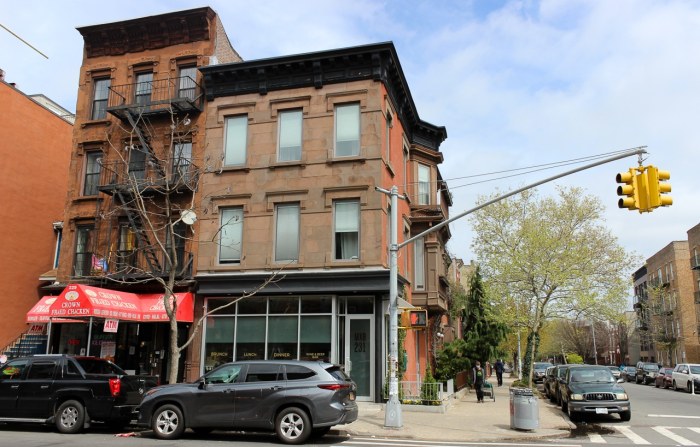James Sewell pokes fun at performance nightmares, but also touches our emotions
Onstage, nothing upstages a dance like a trivial mishap, so when Peggy Seipp’s toe shoe ribbon comes untied, we can’t see anything else that’s happening in the airy, strutting-about ballet to J.S. Bach music. As we pray she’ll find a place to exit gracefully and repair the problem, one of the lights falls from above and swings perilously above the dancers’ heads.
When a crewmember comes on and momentarily stops the performance, we realize that these little disasters in “Barrage” aren’t accidental; they’re choreographer James Sewell’s funny way of reminding us of performers’ worst nightmares. The music speeds up uncontrollably, smoke wafts in from a fire in the wings, Lanky Justin Leaf sabotages Seipp and Benjamin Johnson’s classical pas de deux with bizarre modern movement.
This is not your grandma’s ballet company. Sewell, a New York dancer, who in 1990 resettled in his home state of Minnesota has a fresh way of putting the standard vocabulary together into sparkling dances that pique your emotions as much as they delight your eye. The three dances he showed at the Joyce Theater (January 20-25) reveal his fascination with interlocking floor patterns, fully articulated torsos, and musical canons, highly crafted and original.
Each section of “Moving Works” delights more than the previous one. The fugue-allegro from Bach’s First Sonata for Solo Violin backs five dancers––Julia Walsh, Penelope Freeh, Leaf, Seipp, and Sewell––wearing hot-colored leotards by Mary Hansmeyer. They caper blithely in tricky, close-order canons with rounded backs and angular swinging arms. Next, Kevin A. Jones’s bright washes on the sky cloth pop its six dancers into silhouette; then, bright front lighting throws their multicolored shadows behind them.
Sewell’s fluid athleticism in his acrobatic solo which opens the third part––again to Bach music––transcends ballet vocabulary, as do the three sinewy duets by Leaf and Seipp, Johnson and Walsh, and Brittany Fridenstine and Matthew Keefe, which fall in and out of unison.
Sewell works improvisationally with his seven beautifully ballet-trained dancers to discover some of the unusual movement that expands the ballet vocabulary so creatively.
But Sewell is more than an inventive neo-classic abstractionist. “Loves Remembered,” a 1991 dance set to German lieder by Hugo Wolf, Richard Strauss, Franz Schubert, and Robert Schumann, proves that he can also touch our emotions.
The piece comprises a series of solos and duets, danced with artistry by Freeh and Sewell; the fluid, modern movement, done barefooted, communicates passion with poetic restraint. After solos for Freeh and Sewell about, respectively, the pain of loneliness and the optimism of hope, three duet sections depict innocent flirtation, then a sexual liaison, in which the two artfully tear off each other’s clothes––down to nude leotards––and finally, a reflective remembrance of romances past and lessons learned.

































